| Botanical Name |
|
| Family |
Aloeaceae - The aloe family. |
| Pronunciation |
|
| Common Name(s) |
Afrikaans: Blouaalwyn; Makaalwyn; Gladdeblaaraalwyn
|
| Plant Group |
- Succulent A plant having fleshy stems or leaves often adapted to dry conditions.
|
| Plant Size |
- Medium
| Tree | 10m to 16m |
| Shrub | 1m to 2m |
| Perennial/ground cover | 40cm to 60cm |
| Bulb | 40cm to 60cm |
| Succulent | 40cm to 60cm |
|
| Position |
- Sun The area is in full sun for all or most of the day, all year round.
|
| General Information |
- Drought Tolerance: High The plant is well adapted to arid conditions; it can survive long periods of drought and high temperatures without extra water.
- Evergreen Plants that have leaves all year round.
- Frost: Hardy The plant can withstand freezing temperatures or frost without artificial protection.
- Roots Non-invasive Safe to plant near pools, paving, walls or buildings.
- Sand tolerant Plants adapted to survive in nutrient poor, very sandy soils.
- Water Wise Plant species originating from low rainfall regions that require less water to survive and thrive than other plant species.
- Wind Tolerant Plants able to withstand the effect of strong winds.
|
| Specific Information |
The leaves of Aloe striata are blue-green, smooth, with a pink or red margin and no teeth. It is able to survive wide variety of climatic conditions. In very dry conditions the entire plant may turn a dusty pink which is attractive but also means that the plant is in stress, making it more susceptible to attack by pests or disease. The lack of thorns and the handsome flowers make this a popular garden subject.
|
| Ad Break |
|
| Flowers |
| Description |
a flat-topped, loose head of drooping, tubular flowers on a branched stem
|
| Season |
- Winter Plants will seldom bloom for the entire season as given in the list, but should flower during a period within these parameters.
|
| Colour |
|
| Growth Rate |
- Moderate to Fast Specifying growth rate can be very misleading as there is considerable variation of growth rate depending on type and species of plant, available water, supplementary feeding, mulching and general care, as well as the plants suitability and adaptability to the garden environment.
|
| Plant Uses |
- Accent or Focal Point A plant used to attract the attention because of its colour or form.
- Attracts bees, butterflies or other insects This plant attracts insects which can be food for birds or other creatures in your garden.
- Attracts Birds This plant will attract birds.
- Border A strip of ground, at the edge of a driveway or path in which ornamental plants or shrubs are planted.
- Edging A low growing plant that provides softness or definition to the edges of a bed or walkway.
- Rock Garden An area constructed of larger rocks, arranged naturally, to emphasise the use of stones as a main element. Generally plants used do not need a lot of care.
- Suitable for coastal gardens Plants adapted to dry, sandy soil, forceful wind, limited rainfall and intense sunlight.
- Wild Garden An indigenous garden planted for the benefit of wildlife and birds. Provides food, water, a variety of mini-biomes and no poisonous chemicals are used.
|
| Distribution and Habitat |
Eastern Cape and South Western Cape provinces, in stony soils on rocky hillsides, arid areas near the coast and in the drier areas of the Karoo
|
| Planting Suggestions |
Plant Aloe striata in very well-drained soil in full sun. Water sparingly until the aloe shows signs of fresh growth, after which you can either rely on the rainfall or continue watering periodically. As with most aloe species they are less likely to attack by rust or scale if they are kept healthy.
Watch out for snout beetles. See http://kumbulanursery.co.za/blog/snout-beetle-damage-done-to-aloes
|
| Medicinal Uses |
|
| Ad Break |
|


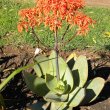
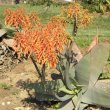
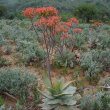
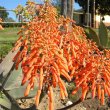
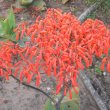
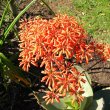



Discuss this plant
Share knowledge, ask a question or give an experience.